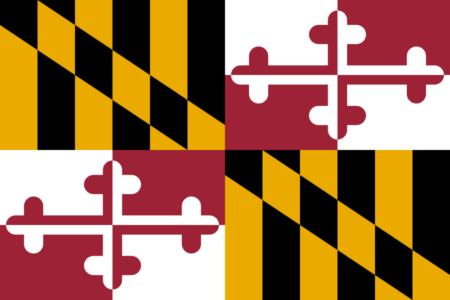Maryland voters went to the polls on Nov. 5th and chose candidates for a slate of offices, from municipal to county, state and national offices. The results of some races were clear before the evening ended, while other contests are still undecided.
In Washington County, that selection included elections for Hagerstown City Council members, a new mayor, a group of school board members, picking a congressional representative from Maryland’s 6th District and electing a U.S. Senator. Area voters also weighed in on a Maryland constitutional amendment for reproductive rights. In the marquee 2024 matchup, the state also voiced its choice for the next President of the United States.
For Hagerstown’s mayoral race, the original contest between Stephen Schutte and Bill McIntire dissolved when Schutte withdrew in August. Hagerstown’s current Mayor, Tekesha Martinez, appointed to the position in 2023, did not seek election.
Schutte’s name remained on the ballot due to a late withdrawal, but McIntire coasted to the mayoral victory with 7,950 votes. Two write-in candidates garnered 565 votes.
McIntire, 57, owns an HVAC company in Hagerstown. He is a member of Leadership Hagerstown’s Class 33 and was endorsed by the Washington County Republican Central Committee. McIntire has vowed to increase public safety, streamline processes and foster sustainable growth during his tenure as mayor.
For Hagerstown’s City Council, voters picked five choices each from a field of 10 contestants. Two incumbents led the unofficial tally, which is still open until mail-in and provisional ballots are tabulated. Current council members Kristin Aleshire and Tiara Burnett will return to the council with 5,836 and 5,745 unofficial votes. Potential newcomers Erika Bell (4,860), Caroline Anderson (4,119), and Sean Flaherty (4,094) are in solid positions to claim the last three council seats, but Mark Bell (4,076) and Mathew Schindler (3,803) are still in the running for a non-partisan seat, pending final results.
The race for Washington County’s school board followed a similar format as eight candidates competed for four open positions on the education leadership council. The school board has seven members, but they are elected on a staggered basis. The board is also a non-partisan post.
The overall leader was Charles Burkett who received 26,114 votes by Wednesday’s count. The second through fourth potential qualifiers were Ashley McCusker (25,919), Victoria Beachley (25,715) and April Zentmeyer with 24,797 votes.
Current board members on the cusp of being ousted, pending a full counting of votes, include Board Vice President Stan Stouffer (currently fifth), Peter Bickford (sixth) and Board President Melissa Williams (seventh). Washington County voters potentially signaled a desire for new leadership in the area’s school district.
Maryland asked its voters to decide on a Constitutional Amendment concerning reproductive rights, which stated, in part, “The proposed amendment confirms an individual’s fundamental right to reproductive freedom, including but not limited to the ability to make and effectuate decisions to prevent, continue, or end the individual’s pregnancy.” Seventy-four percent voted to confirm that amendment statewide, while the local consensus showed 62 percent of Washington County residents approved of that reproductive guarantee of rights.
For Maryland’s 6th Congressional race, Republican Neil Parrott faced Democrat April McClain Delaney for the privilege to represent Western Maryland in Congress. The district has a core conservative base in Washington, Allegheny and Garrett Counties, the state’s far west region, mixed with more suburban and urban liberal voters in Frederick County and portions of Montgomery County. Through the years, the district has been represented by leaders from both parties, most recently by Democrat David Trone, who vacated the seat to run for Maryland’s open U.S. Senate seat, but he lost in the primary election.
McClain Delaney, 60, is a former Biden administration official who lives outside of Maryland’s 6th District. She is the wife of former U.S. Rep John Delaney, who was the predecessor of David Trone, the current 6th district office holder. Delaney ran with a slogan of “Common Sense, Common Ground” and vowed to work toward immigration reform, protecting reproductive rights and building the economy.
Parrott is a 54-year-old politician who represented Washington County as a State Delegate in Maryland’s General Assembly until 2023. With prior experience as a traffic engineer in Frederick County, Parrott ran on a platform of reducing inflation, securing the border, improving public safety and fixing the housing crisis.
The evenly matched contest between these two candidates produced a statistical dead heat on election night, with both candidates receiving 50 percent of votes cast. McClain Delaney has a slim 215-vote lead, out of 320,000 votes counted, but mail-in and provisional ballots are still being processed.
Maryland’s U.S. Senate race was listed by many political pundits as a top-10 contest, as control of the Senate chamber rested on several high-profile Republican/Democrat matchups around the country. Current Maryland Senator Ben Cardin (D) retired, leaving the seat open for a contest between former Gov. Larry Hogan, a Republican with centrist views, and Angela Alsobrooks, winner of a hotly contested Democrat primary.
Hogan remained a popular figure in Maryland politics after leaving the governorship, elected twice (2014/2018) in a solidly blue state. He hoped running as a “Maryland Republican” where he could potentially work on both sides of the Senate aisle, would make him an acceptable choice to more liberal state voters.
Democrat Alsobrooks presented Marylanders with a historic alternative, running to be the first woman of color elected to Maryland’s Senate delegation. With her background as the county executive of Prince George’s County, and endorsements from prominent Democratic leaders nationwide, Alsobrooks was poised for a strong Senate run.
Throughout the campaign, Hogan struggled to play catch up to his rival’s consistent lead in the polls, and by election evening the contest was called for Alsobrooks, winning with 52 percent of the vote. At her victory rally, Alsobrooks thanked Hogan for his service to Maryland, praised her dedicated campaign manager and said her Senate victory “Couldn’t have been possible without the great people of Maryland.”
Maryland wasn’t in play for Republican Donald Trump in the states’ presidential race. While Washington County and western Maryland voters typically prefer conservative candidates (Washington County voted 61 percent for Trump in 2020), the urban and suburban sections of the state surrounding Washington, D.C., and the Baltimore area are liberal-leaning territories. Those areas typically favor Democratic presidential nominees in Maryland.
Democrat Kamala Harris won Maryland’s 10 electoral votes with 59.7 percent of the vote. But that win wasn’t enough for Harris nationwide, as Trump won a second term in the White House bolstered by his battleground state win in neighboring Pennsylvania.
As the 2024 election showcased, Maryland continues its claim as “America in miniature”, containing both conservative and liberal voting blocs that can influence elections and inspire hearty debate on social and political issues.






















